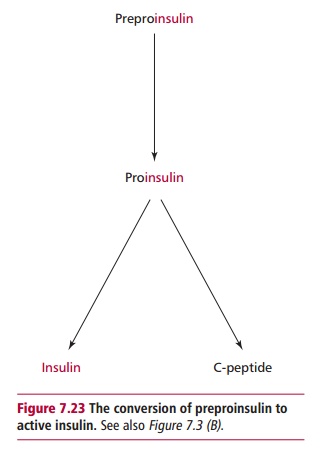Chapter: Biology of Disease: Disorders of the Endocrine System
Diagnosis and treatment of hypoglycemia
Diagnosis and treatment of hypoglycemia
An initial assessment of a patient with frequent episodes of hypoglycemia involves a thorough clinical evaluation with an emphasis on the patient’s drug history, relationship of symptoms to meals, presence/history of endocrine disease and an investigation of a possible nonpancreatic tumor. Laboratory tests can confirm the diagnosis of hypoglycemia by demonstrating a low blood glucose concentration. To confirm that the clinical features are due to hypoglycemia, the patient can be given glucose by mouth or parenterally as appropriate. Symptoms that are due to acute neuroglycopenia resolve immediately whereas those due to chronic neuroglycopenia often persist. Measurement of plasma insulin concentration can help in the diagnosis or exclusion of an insulinoma. An insulinoma is likely if the patient has fasting hypoglycemia together with high serum insulin levels that are greater than 10 mU dm–3 and raised C-peptide levels (Figure 7.23). Insulin secretion in an insulin-treated diabetic cannot be determined for obvious reasons. However, insulin and the C-peptide are secreted by islet cells in equimolar amounts and therefore a measurement of C-peptide together with insulin can differentiate between hypoglycemia due to an insulinoma, which will have a high C-peptide concentration, from that due to exogenous insulin, which will have relatively low amounts of C-peptide.

Hypoglycemia can be fatal and patients must be treated urgently. The aim in comatose patients is to rapidly correct the hypoglycemia using intravenous dextrose or intramuscular glucagon. If a patient is conscious and can swallow, then they are given sweet drinks, sweets or glucose tablets. The underlying cause of hypoglycemia needs to be identified and rectified; an insulinoma, for example, requires surgical removal.
Related Topics